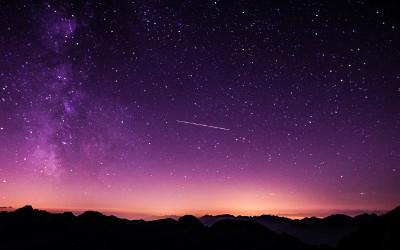OU awarded £2M to develop the next generation of UV space telescopes

Open University (OU) researchers have been awarded £2.1M to test and develop detectors for the next generation of ultraviolet (UV) space telescopes to continue the search for life on other planets.
The Centre for Electronic Imaging (CEI) at the OU has received the funding so that it can carry out this testing to develop detectors optimised for applications in space in the UV wavelength range.
The detectors will be used on the CASTOR space telescope, a Canadian-led mission on track for a launch in 2030 pending continued funding, which will provide a window into the UV universe that cannot be reached from the ground. This will give us more knowledge on a range of topics, such as the evolution of the universe, how stars and galaxies are formed and evolve, and the compositions of atmospheres of planets around other stars, helping the search for life in the universe.
The team at the OU, led by Dr Jesper Skottfelt, will be collaborating with an international team of scientists and engineers to design and build this telescope.
Supporting UK industry
Teledyne e2v, a world-leading manufacturer of imaging devices for space based in the UK, will deliver the test devices, and Dr Skottfelt and his team will work closely with them to improve the performance of the detectors.
The work will therefore further improve the UK's leading position in developing and manufacturing imaging detectors for astronomy and space science applications.
UV light has a shorter wavelength and higher energy than visible light, and it is very effectively blocked by the Earth’s atmosphere. It is therefore only possible to do these observations from space and the new detectors on the telescope will make significant improvements to these observations.
UV light further has uses in other areas, such as lithography, which is used in the production of microchips and other electronic components, and to test the purity of DNA and RNA samples.
Dr Skottfelt, said:
"Working on the detectors for the CASTOR mission is a really interesting project that shows the strength of the OU and CEI in space research.
“The next generation of large space telescopes are being designed with UV capabilities and this work will position UK industry as the supplier of choice for the detector for these missions.”
Dr David Hall, the Director of the CEI adds:
“We are now in the 20th year of formal collaboration of the Centre for Electronic Imaging (CEI) with Teledyne e2v; a partnership that continues to grow and flourish. Over the last two decades, the research group has primarily focussed its expertise on X-ray and visible space missions, but this project demonstrates an exciting new area as we branch out into the UV.”
You may also be interested in:
Quarterly Review of Research
Read our Quarterly Review of Research to learn about our latest quality academic output.

Contact our news team
For all out of hours enquiries, please telephone +44 (0)7901 515891
Contact details